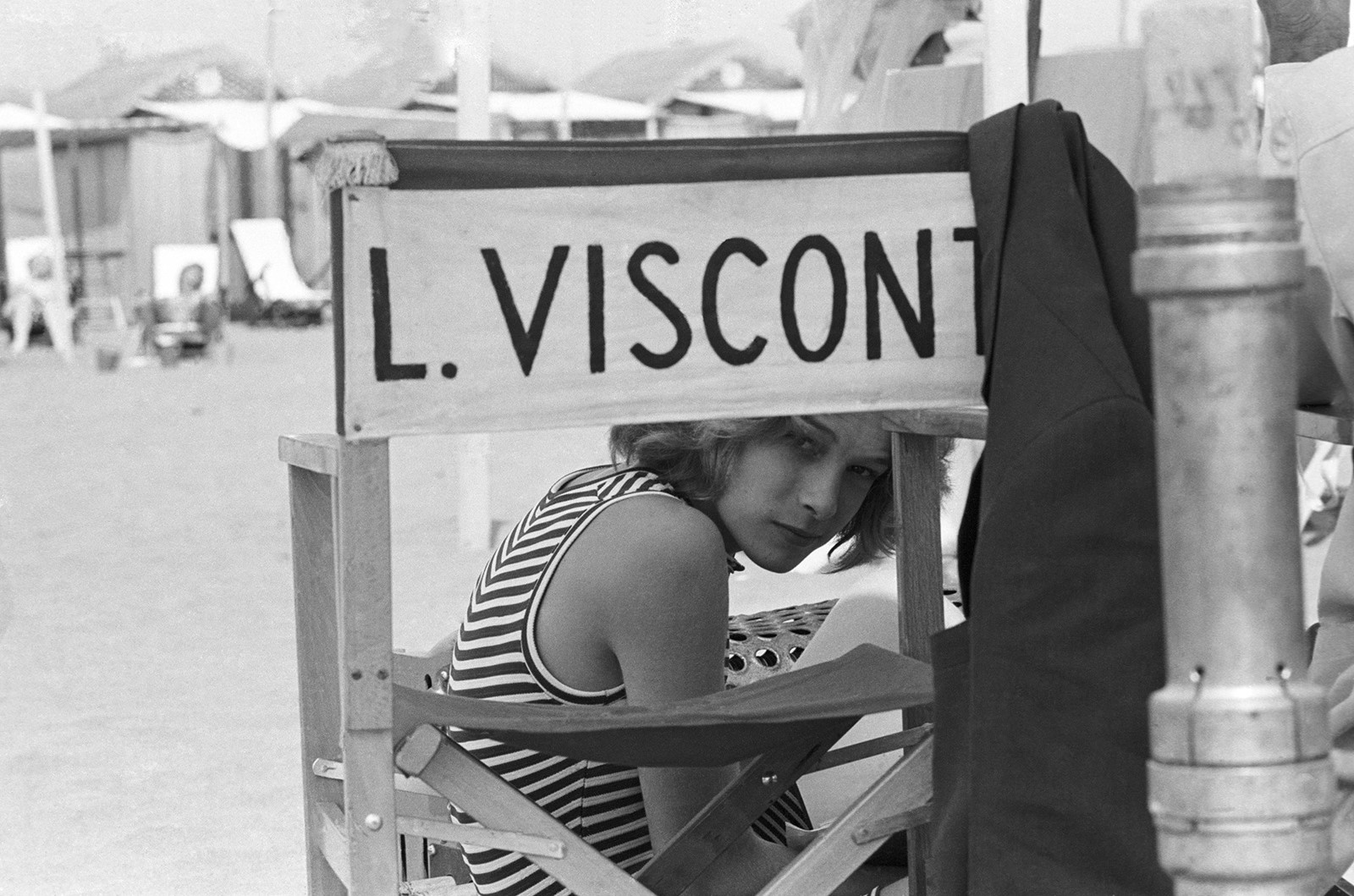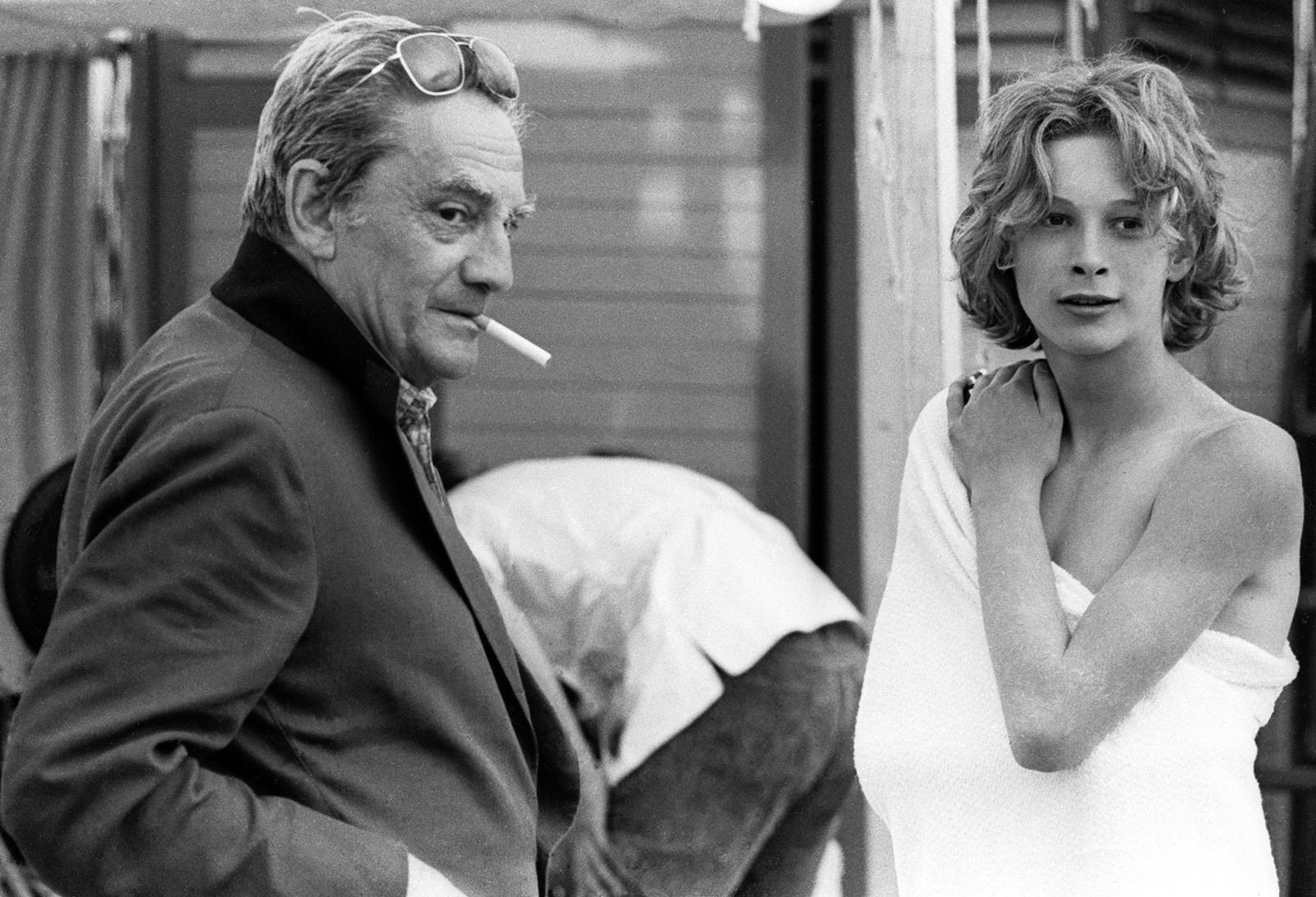This article was originally published on 29 July 2021.
In a grisly scene mid-way through the pagan horror Midsommar, a commune elder with long grey hair and a wispy beard launches himself off a cliff and crumples onto the rocks below. Barely alive, his fellow cult members take turns to smash his face in with a giant mallet. It’s an easter-egg of a casting choice, because 50 years ago, that face – now weathered and gaunt but still startlingly arresting – was declared the most beautiful in the world.
Björn Andrésen was 15 years old in 1970. At that time, legend of Italian cinema Luchino Visconti had arrived in Sweden, searching for a boy to play the beguiling focus of a dying composer’s infatuation for what some consider his masterpiece, Death in Venice. Based on a novella by Thomas Mann, the film required an adolescent able to embody Mann’s rhapsodic description: “ … pale, with a sweet reserve, with clustering honey-coloured ringlets, the brow and nose descending in one line, the winning mouth, the expression of pure and godlike serenity.”

Visconti had travelled through Hungary, Poland, Finland and Russia in his search, assembling row after row of blond-haired youths for inspection, until one day – in a Stockholm hotel – Björn Andrésen walked in. The director’s reaction was instantaneous, and is captured on Super 8 footage unearthed by Kristina Lindström and Kristian Petri for their documentary, The Most Beautiful Boy in the World. “Beautiful!” says Visconti. “Ask him to undress!” Within minutes, Andrésen is standing, painfully uncomfortable in his underwear, as a roomful of adults scrutinise him. 50 years on, living in a small and squalid Stockholm apartment, Andrésen is still grappling with the fallout from that queasy moment, and from the rocketing fame he never sought that followed.
It was an imbalanced match, to say the least. Cinematic giant Count Don Luchino Visconti di Modrone was the heir of Milanese industrialists and nobility, and a formidable presence born to issue orders. Andrésen was a teenager living in a rural cabin with his grandmother, following the trauma of his mother’s suicide when he was just ten – he never knew his father. (It was his grandmother’s silver-screen dreams that landed him at that fateful audition.) Visconti’s hawk-like instinct saw not just Andrésen’s swallowed-a-light-bulb Scandinavian good looks, but something harder to define: an aura of melancholy, a delicate awkwardness, the suggestion of deep waters that celluloid seemed only to magnify. “He was different from the other boys. There was a sadness around him, a vulnerability. Visconti was so smart, he saw that. It’s obvious Björn had some very special charisma. And he still has it,” says Petri. “He chose him because everything that happened to Björn in his childhood was in his eyes,” says Lindström.

Within months, Andrésen was on the Venice Lido dressed in a sailor-suit to play ‘Tadzio’, the 14-year-old object of Dirk Bogarde’s obsession in Visconti’s ruthless study of a doomed aristocracy who haunt the Hotel des Bains in frills and bows while cholera creeps through the city’s canals. Visconti gave a directive to his crew that they weren’t to lay a finger on his precious discovery – Bogarde wrote in his memoir: “He was never allowed to go into the sun, kick a football about with his companions, swim in the polluted sea, or do anything which might have given him the smallest degree of pleasure … He suffered it all splendidly.” All that changed when Death in Venice wrapped. At its London premiere, Visconti declared him “the most beautiful boy in the world” – a clever promotional soundbite for his film, but an impossible albatross for his protegee, transforming the teenager into an object onto which a deluge of fantasies were projected. “I was terrified,” Andrésen remembers, “it felt like swarms of bats around me pretty much all the time.”
A reluctant pop career in Japan followed, where he remembers being pursued by girls brandishing scissors to lop off his locks – and plied with unidentified pills by agents and managers to boost his courage in the face of a relentless schedule of public appearances. Later, he was put up in a Parisian apartment for a year by a wealthy older man and paraded around nightclubs. “I felt like some kind of wandering trophy,” he says. It’s a time he still prefers not to discuss. “These sad stories have been going on for as long as show business and film have existed. So many child stars have unhappy experiences. #MeToo of course was mostly women, but #MeToo is also a matter of [misusing] power and that is definitely where Björn’s story fits in,” says Petri. “He said, ‘I understand how these women felt, because I’ve been there myself’,” adds Lindström.
The filmmakers spent five years gaining Andrésen’s trust. “He was not very fond of talking about this,” Petri admits. But by giving Andrésen the freedom to shape its pathways, the documentary, with its many traumatic revelations, feels as fittingly multi-layered and unconventional as its subject. The dissonance the young star suffered from becoming a famous face before his identity had fully coalesced seems to have distanced Andrésen from himself, and he has spent a lifetime trying to put the pieces together into a coherent whole – but that journey has turned him into an extraordinarily clear-eyed philosopher. “He knows he’s not an easy person,” says Petri. “He doesn’t need or want to put himself in a better light. He wants honesty,” says Lindström. “We chose a picture for the poster – it’s him at the end of the Visconti audition, when they ask him to take off his shirt. I asked Björn, what were you thinking at that moment? He said, ‘I felt so angry.’” That day he was plucked from obscurity continues to shape his life – most recently, of course, in the form of Lindström and Petri’s powerful documentary. But this time, it is Andrésen’s story we hear, rather than the ideas and projections of others who so spectacularly failed to protect him. Five decades later, the filmmakers have in some ways given him back his voice.
The Most Beautiful Boy in the World is in cinemas and on demand now.
